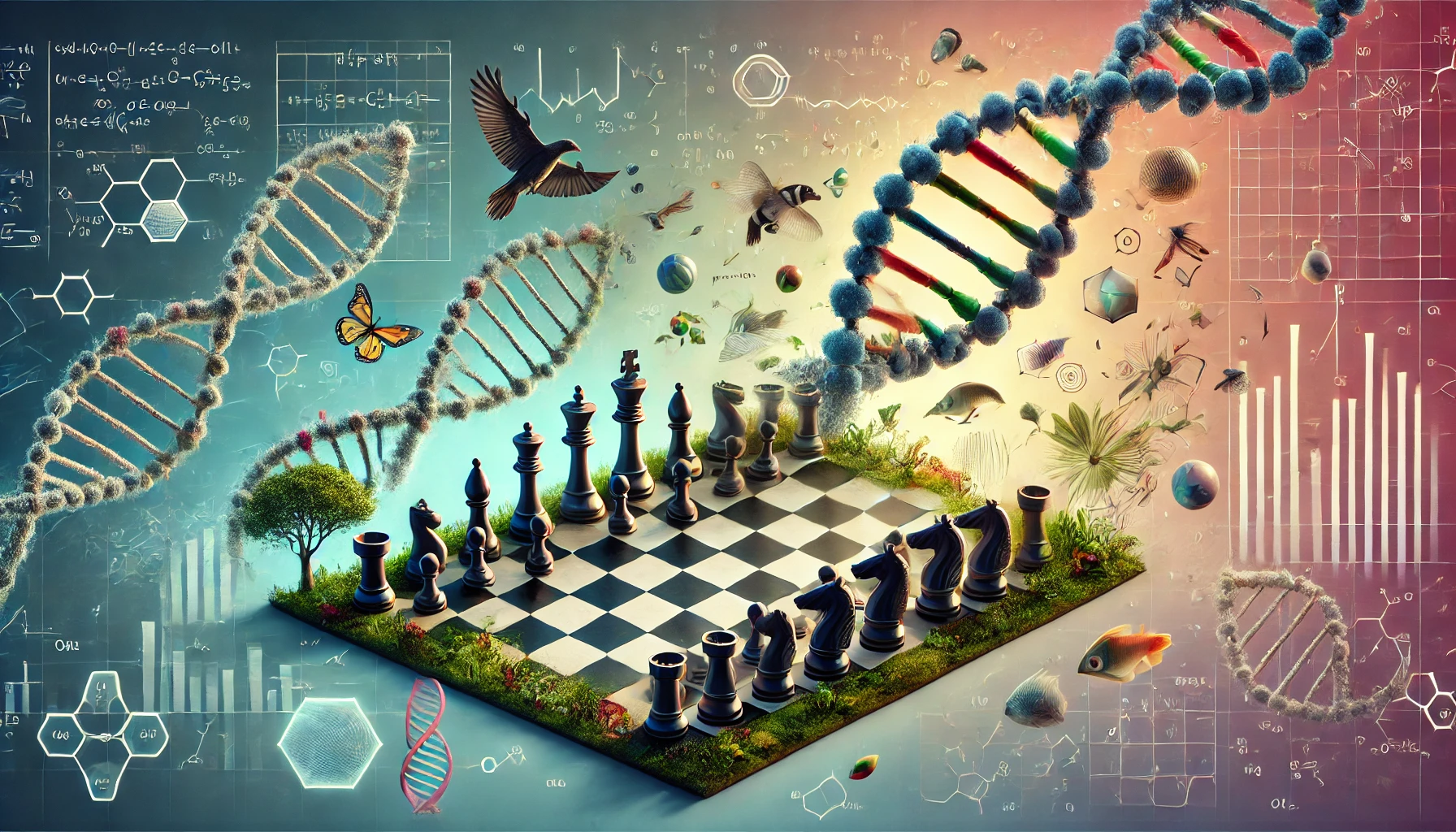
George C Williams
Achilles:
what is antagonistic pleiotropy?
Tortoise:
Antagonistic pleiotropy is an evolutionary theory that suggests some genes have both beneficial and harmful effects, depending on the stage of life. A gene that enhances fitness in Achilles:th (e.g., promoting growth or reproduction) might have negative effects later in life (e.g., contributing to aging or disease). This trade-off explains why natural selection allows aging-related genes to persist. A classic example is the p53 tumor suppressor gene, which prevents cancer early in life but may contribute to aging by limiting cell regeneration.
Achilles:
who first hypothesized it?
Tortoise:
The concept of antagonistic pleiotropy was first hypothesized by George C. Williams in 1957. In his paper “Pleiotropy, Natural Selection, and the Evolution of Senescence,” he proposed that certain genes are favored by natural selection because they provide benefits early in life, even if they have detrimental effects later, contributing to aging and age-related diseases.
Achilles:
What else did George C Williams do?
Tortoise:
George C. Williams was a key figure in evolutionary biology. His major contributions include:
-
Antagonistic Pleiotropy Hypothesis (1957) – Explained aging as a trade-off where genes beneficial in Achilles:th have harmful effects later.
-
Adaptation and Natural Selection (1966) – Argued for a gene-centered view of evolution, influencing Richard Dawkins’ The Selfish Gene.
-
Evolution of Sex – Proposed that sexual reproduction evolved to combat the accumulation of harmful mutations (a refinement of Muller’s Ratchet).
-
Critique of Group Selection – Challenged the idea that evolution primarily acts at the group level, reinforcing individual selection.
-
Darwinian Medicine – Co-authored Why We Get Sick (1994) with Randolph Nesse, applying evolutionary theory to medicine.
His work reshaped modern evolutionary theory, particularly in aging, adaptation, and natural selection.
Achilles:
What paper(s) did he talk about the evolution of sex in?
Tortoise:
George C. Williams discussed the evolution of sex primarily in his 1975 book:
- “Sex and Evolution” (1975) – He explored why sexual reproduction persists despite its costs, arguing that it helps eliminate harmful mutations and maintain genetic diversity.
In addition, his earlier 1966 book, Adaptation and Natural Selection, touched on the topic by critiquing group selection theories related to the benefits of sex.
His ideas contributed to theories like Muller’s Ratchet (mutation accumulation in asexual populations) and the Red Queen Hypothesis (sex helping species adapt to co-evolving parasites).
Achilles:
Why did sex evolve?
Tortoise:
Sex evolved primarily because it provides evolutionary advantages that outweigh its costs. The main theories explaining its persistence include:
-
Genetic Variation Hypothesis – Sexual reproduction shuffles genes, creating diverse offspring that can better adapt to changing environments.
-
Muller’s Ratchet – Asexual populations accumulate harmful mutations over time, while sex allows recombination to “reset” the genome and eliminate deleterious mutations.
-
Red Queen Hypothesis – In constantly evolving environments, particularly with parasites and diseases, sex provides an advantage by generating genetic diversity that helps organisms stay ahead in the evolutionary “arms race.”
-
Repair Hypothesis – Recombination during sexual reproduction helps repair damaged DNA, increasing the long-term survival of a species.
Despite its costs (energy, time, need for a mate), these benefits help explain why sex has been favored by natural selection.
Achilles:
How many of these theories have been experimentally proven?
Tortoise:
Several of these theories have experimental support, though no single explanation fully accounts for the evolution of sex. Here’s what the evidence says:
-
Genetic Variation Hypothesis – Supported
- Experiments with rapidly evolving populations (e.g., bacteria, yeast, and fruit flies) show that sexual reproduction helps populations adapt faster than asexual ones in changing environments.
-
Muller’s Ratchet – Supported
- Studies on asexual organisms (e.g., rotifers and bacteria) show they accumulate harmful mutations over time, while sexually reproducing counterparts avoid this through recombination.
-
Red Queen Hypothesis – Strongly Supported
- Experiments with host-parasite systems (e.g., C. elegans worms and their bacterial parasites) confirm that sexually reproducing populations are better at resisting evolving pathogens than asexual ones.
-
DNA Repair Hypothesis – Some Support
- Studies show that recombination helps repair damaged DNA, especially in stress conditions, but it’s unclear if this was the primary driver for the evolution of sex.
Overall, the Red Queen Hypothesis and Muller’s Ratchet have the strongest experimental support, but sex likely evolved due to a combination of these factors.
Original conversation: https://chatgpt.com/share/679ee4b0-4338-800d-a714-388d37c03059